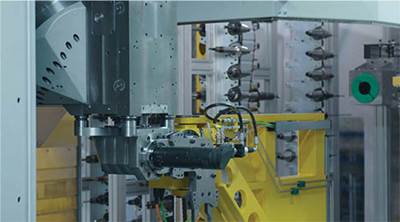Innovative advancements in the field of die-cast production machining have paved the way for increased efficiency and reduced downtime. By harnessing the power of Horizontal Machining Centers (HMCs), manufacturers can now optimize their operations, resulting in enhanced productivity and cost-effectiveness.
The Evolution of Die-Cast Production Machining
Die-casting, a process that involves injecting molten metal into a mold cavity under high pressure, has long been utilized to create intricate components with exceptional precision. However, traditional machining methods often posed challenges such as prolonged setup times and limited flexibility.
With the advent of HMC technology, these limitations are being overcome. The integration of computer numerical control (CNC) systems allows for precise control over cutting tools’ movements, ensuring consistent quality throughout the manufacturing process. Moreover, HMCs offer multi-axis capabilities that enable simultaneous machining from various angles – a feature particularly advantageous when dealing with complex geometries.
This evolution has revolutionized die-cast production machining by significantly reducing downtime associated with tool changes and repositioning requirements. Manufacturers can now seamlessly transition between different tasks without compromising accuracy or wasting valuable time on manual adjustments.
The Benefits of Implementing HMCs in Die-Cast Production
Beyond minimizing downtime, implementing HMC technology brings forth an array of benefits for die-cast production processes. Firstly, these advanced machines facilitate higher spindle speeds and feed rates while maintaining optimal precision levels – ultimately leading to faster cycle times without sacrificing quality standards.
HMCs also excel at handling large volumes of workpieces due to their robust construction and spacious work envelopes. This capability enhances overall throughput rates while accommodating diverse product specifications within a single setup – streamlining operations further.
Furthermore, the integration of automated tool changers and pallet systems in HMCs enables uninterrupted production runs. By reducing manual intervention, manufacturers can achieve greater operational efficiency and minimize human error risks.
The Future of Die-Cast Production Machining
As die-cast production machining continues to evolve, it is evident that HMC technology will play a pivotal role in shaping its future. The ongoing advancements in automation, artificial intelligence (AI), and data analytics are poised to further enhance productivity levels while optimizing resource allocation.
Incorporating AI algorithms into HMC systems allows for real-time monitoring and predictive maintenance – ensuring proactive measures are taken before any potential issues arise. Additionally, leveraging data analytics provides valuable insights into process optimization opportunities, enabling manufacturers to make informed decisions regarding workflow adjustments or equipment upgrades.
Achieving Excellence through HMC Integration
In conclusion, Horizontal Machining Centers have revolutionized die-cast production machining by minimizing downtime and maximizing efficiency. With their multi-axis capabilities, high spindle speeds, and automated features such as tool changers and pallet systems – these advanced machines offer unparalleled precision while streamlining operations. As we look towards the future of this industry, continued innovation in HMC technology promises even greater advancements that will undoubtedly shape the landscape of die-cast production machining for years to come.
